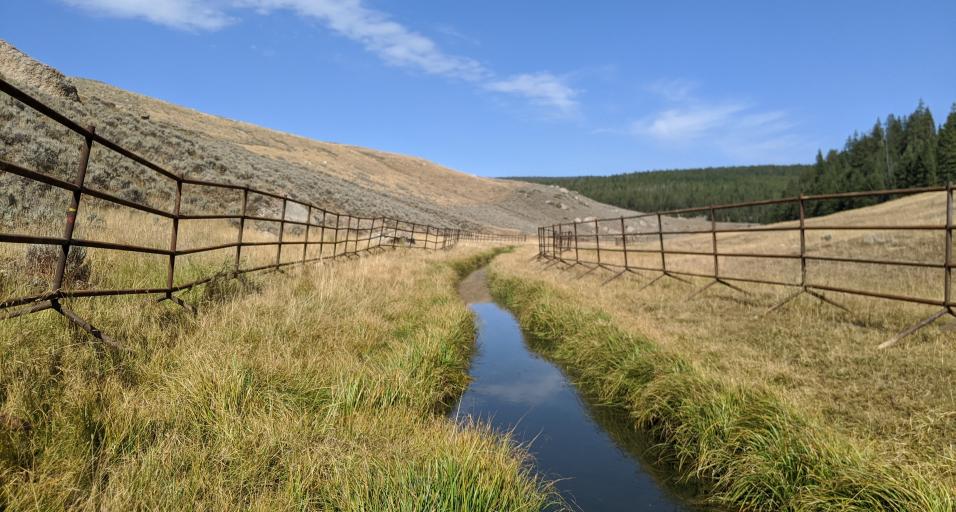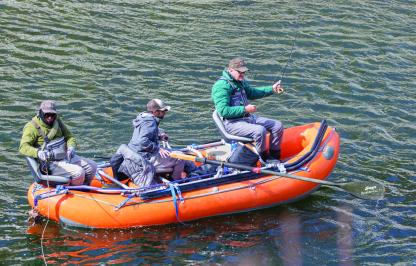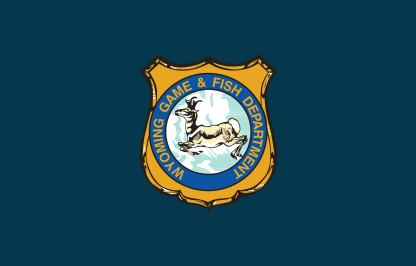Last September, partners from multiple originations gathered in the Bighorn Mountains to work on a habitat improvement project for Yellowstone cutthroat trout in the Soldier Creek drainage.
With funding from Wyoming Wildlife Natural Resource Trust, partners from Wyoming Game and Fish Department, Trout Unlimited and the U.S. Forest Service installed 3,000 feet of moveable, steel jack fence along a section of Soldier Creek. R&M Welding was contracted to build, deliver and help install the fence.
The goal of the project is to prevent excessive elk, moose and cattle use of riparian stream habitat to allow for willow regeneration and growth. Riparian habitat in general, and willow growth in particular, will be monitored inside the enclosure. Once habitat improvement goals are met, the fence will be moved systematically upstream. Eventually, nearly one mile of riparian habitat along Soldier Creek will be restored. In the spring of 2021, the group plans to plant approximately 1000 willows within the enclosure area.
“Complex and robust riparian habitat provides overhead cover, thermal buffering, deep pools and better spawning habitat. All which benefit a trout population, allowing them to persist and thrive in varying water conditions,” said Cody Fisheries Biologist Joe Skorupski. “Habitat in Soldier Creek has been impacted by grazing from wildlife and cattle, and in many areas woody vegetation is lacking along the stream channel. The U.S. Forest Service and the grazing permittee continue to take steps to improve and monitor associated grazing allotments. Improvements have been observed, but willow establishment and regeneration continues to be impeded. To allow for the establishment and regeneration of willow communities and improvement of riparian species community composition, an exclosure fence is needed.”
The construction of the fence and future willow planting are part of a much larger, landscape scale initiative to improve habitat and conserve Yellowstone cutthroat trout populations in the South Paintrock drainage.
“Over the last few decades, the U.S. Forest Service, the grazing permittee, Trout Unlimited, Game and Fish and Wyoming Wildlife Natural Resource Trust have worked together to replace culverts, build off-channel water tanks and improve pasture fencing and grazing practices to benefit Yellowstone cutthroat trout in the area,” Skorupski said. “The steel jack fence installation is one important piece of the puzzle, but not the only important work that has been completed within the drainage. It takes a village to complete these projects and without these valuable partners the extent of work completed in the drainage would not be possible.”
Yellowstone cutthroat trout have experienced declines across their historic range; specifically, only 9% of the Bighorn Mountains historic range is currently occupied. Approximately 21 miles of the South Paintrock Creek drainage were restored with Yellowstone cutthroat trout from 2008 to 2012, expanding an existing headwater population. This population now inhabits 25 miles of stream making it the largest population of Yellowstone cutthroat trout in the Bighorn Mountains. Improving habitat conditions for Yellowstone cutthroat trout allows for a healthier and more secure population.
Crews assemble steel jack fence along Soldier Creek. Photo courtesy of John Madia.
Dave Sweet with the East Yellowstone Chapter of Trout Unlimited offloads components of the steel jack fence. The Little Big Horn Chapter of Trout Unlimited also assisted with the project. Photo courtesy of John Madia.
Cattle grazing around the installed steel jack fence.
Partners work to improve habitat for Yellowstone cutthroat trout in Bighorn Mountains
Joe Skorupski 307-527-7125




